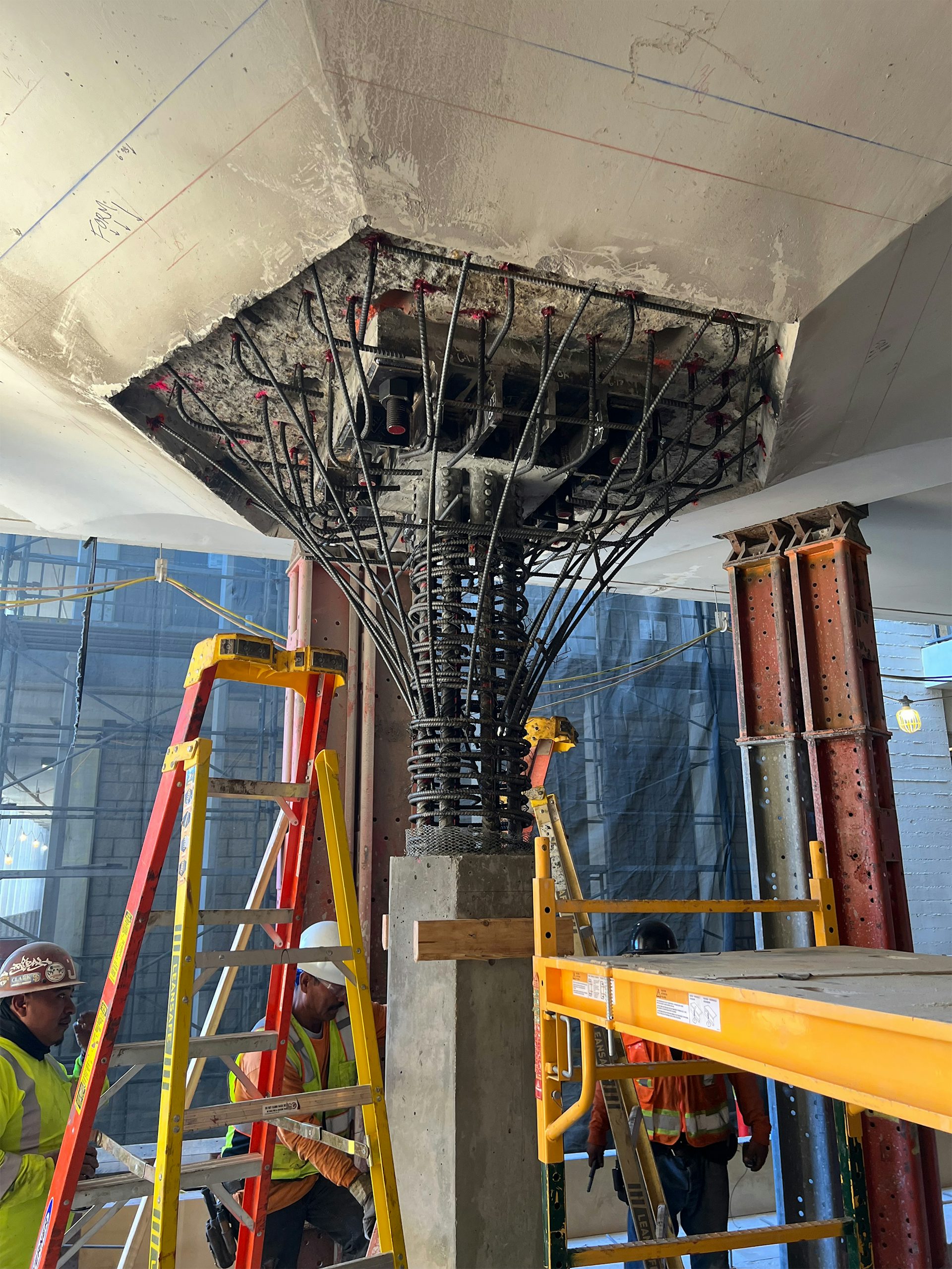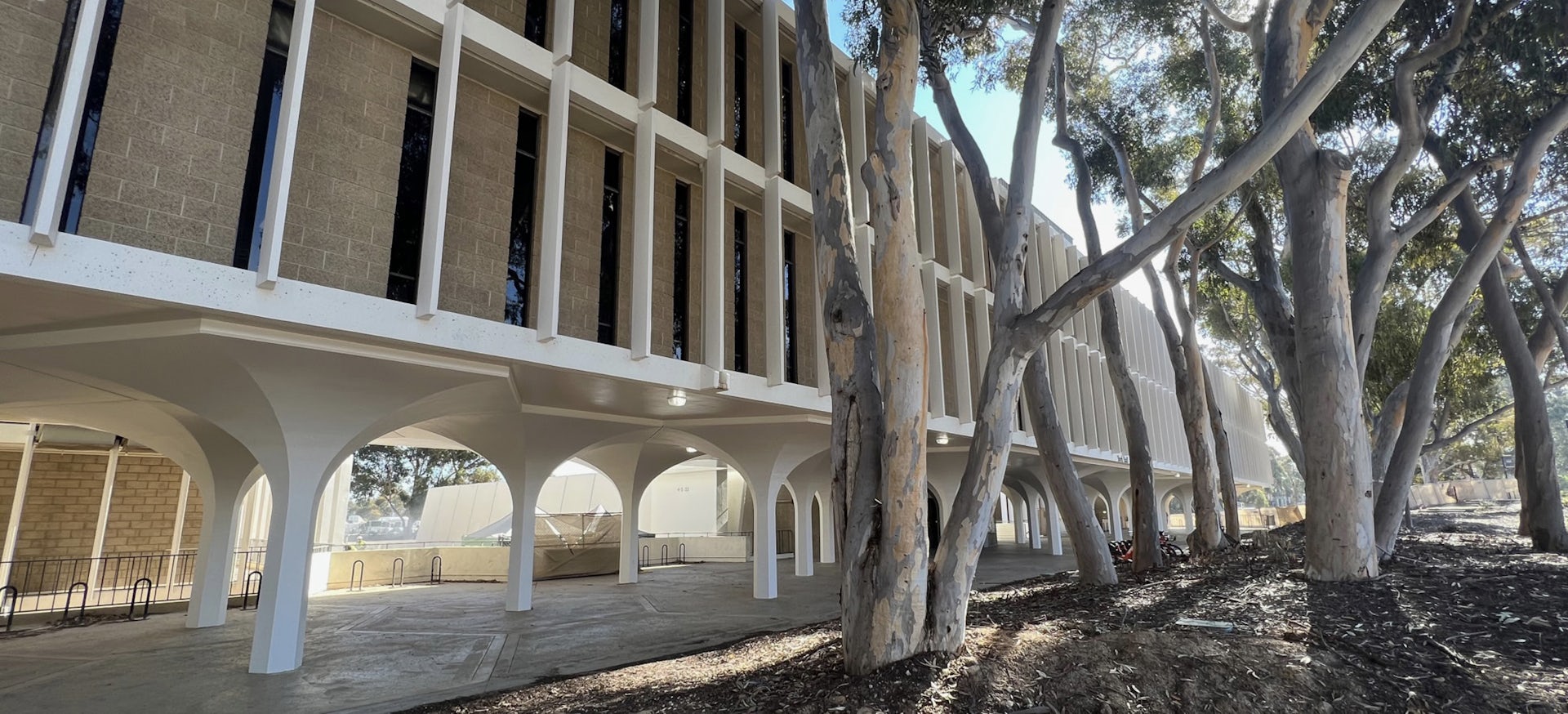By Ray Huard
The following is excerpted from the San Diego Business Journal.
A $35 million project to strengthen one of the oldest buildings on the University of California San Diego’s Torrey Pines campus to protect it from earthquakes is wrapping up with completion expected in the fall.
Built in 1966 in the Revelle College neighborhood of UC San Diego, the 134,000-square-foot York Hall was one of the original structures on campus and is a centerpiece of the university.
“It’s a really heavily used building that’s booked from early in the morning until late at night,” said Bryan Seamer, director of structural engineering at LPA, an Irvine company that designed the project.
Consisting of four connected buildings, York Hall also “is the heart of our campus,” said Elisa Pittner, UC San Diego project manager.
Although not listed on an historic register, York Hall “contributes to the historic character of our campus,” Pittner said. “We do select architects and designers, who propose how they would do this without interfering with that historic character, not just the building, but the overall Revelle College character.”
Work on the project began in 2020, and this year, it received awards from the Structural Engineering Association of San Diego and the Structural Engineering Association of Southern California, an industry trade group.
San Diego Business Journal: $35M Project Protects UCSD Centerpiece from Earthquakes


‘An Elephant on Chicken Legs’
With 36 elaborate, ornate columns, including four that needed to be completely rebuilt using steel rebar wire and fiberglass molds, and with masonry walls that weren’t designed to withstand a major quake, the seismic retrofit proved especially challenging.
“The more significant and challenging part of the retrofit was that the western wing of York Hall is a very unique design where there’s there two stories of classroom space above an exterior arcade with these really striking, beautiful columns,” Seamer said. “It’s really this iconic piece of architecture on campus. There’s a lot of stress on those columns to be able to resist an earthquake trying to shake the whole building back and forth.”
Seamer said that the four ornate columns that had to be rebuilt weren’t designed to absorb rocking motions that would occur in the upper parts of the building during an earthquake.
Consider the building to be like “an elephant standing on chicken legs” and how hard it would be for that elephant to stay standing, Seamer said. “The geometry of those columns is unique.”
To recreate the look, molds were cast of the four existing columns to be replaced, then taken to a boat manufacturer to make fiberglass forms, said Michael Gibbons, construction project manager of PCL Services, the general contractor.
Read the Full Article on San Diego Business Journal.














